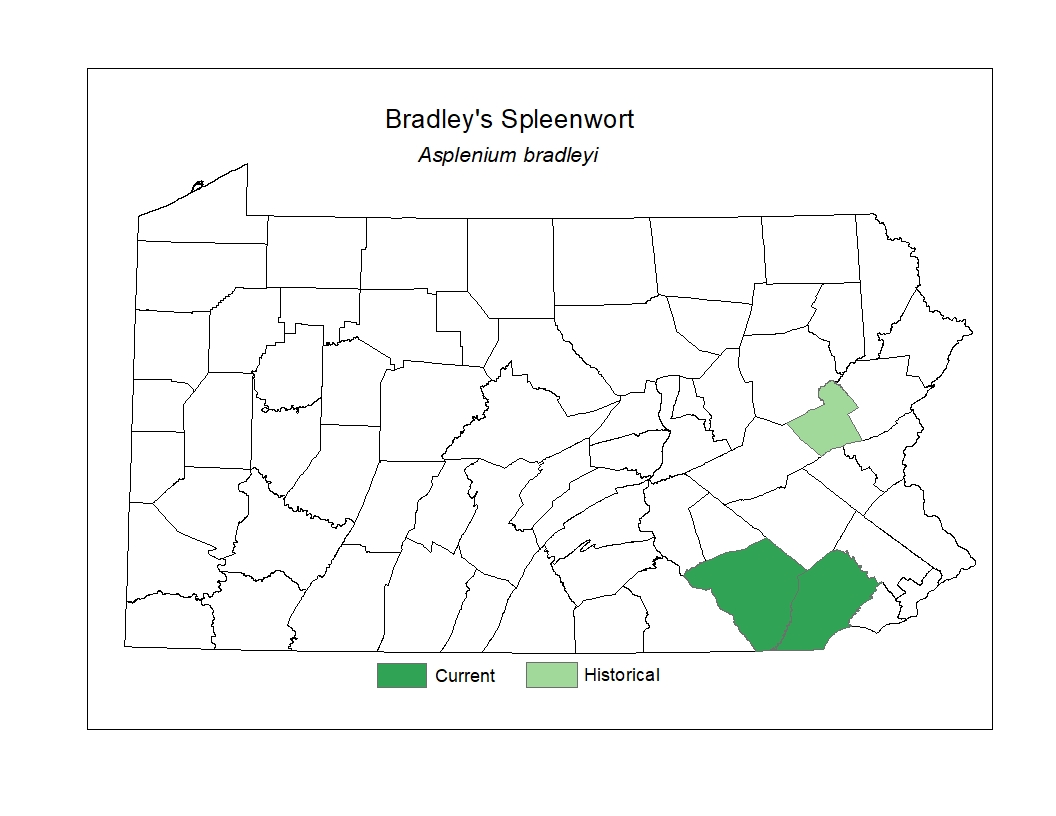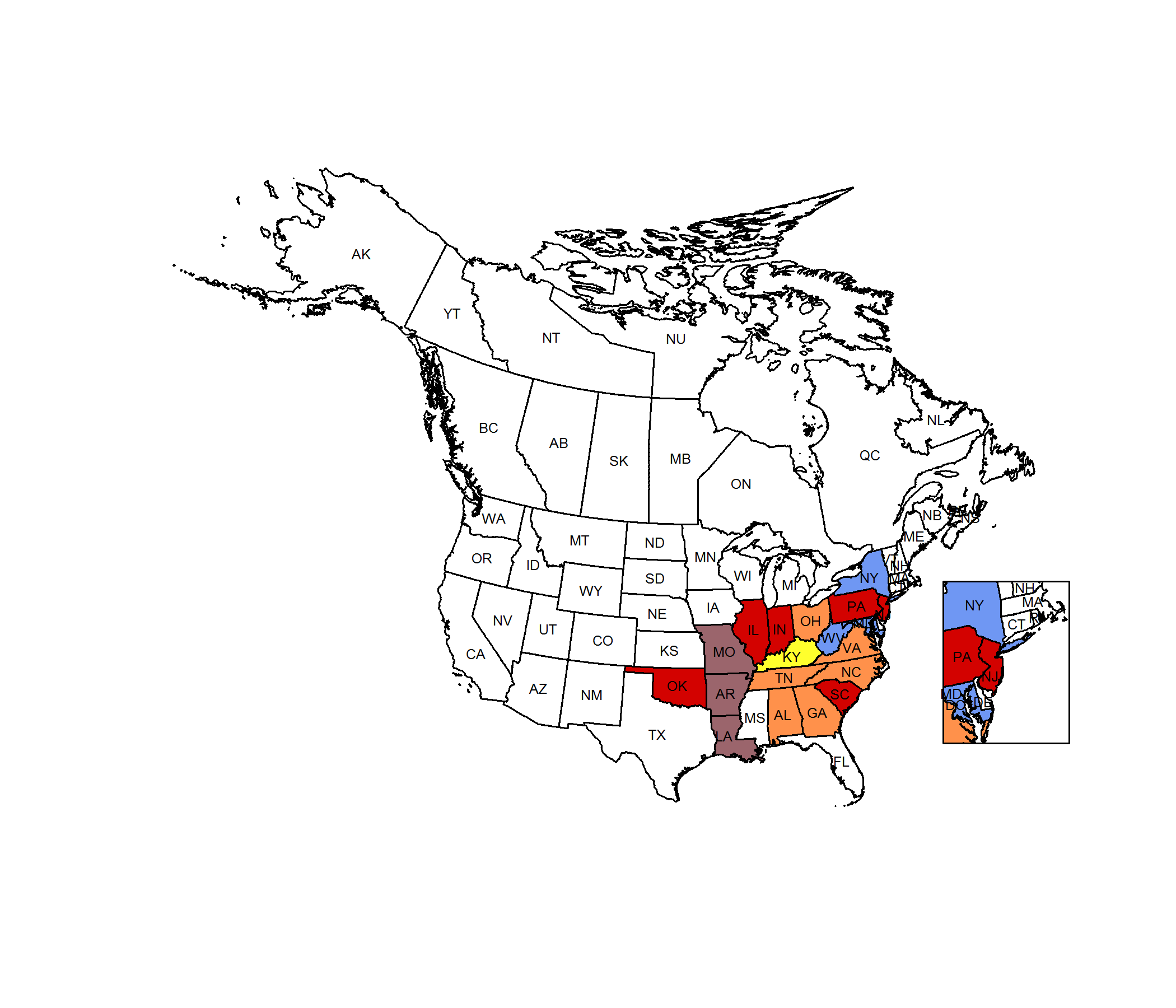 Species Factsheets
Species Factsheets
Asplenium bradleyi
Bradley's Spleenwort
State Status: Pennsylvania Endangered (PE)
PBS Status: Pennsylvania Endangered (PE)
Federal Status:
Global Rank: G4
![]() rank interpretation
rank interpretation
State Rank: S1
Did You Know?
The genus name of this species comes from a name used for a fern that was supposed to cure diseases of the spleen.
Description
Bradley's spleenwort (Asplenium bradleyi) is a small fern that grows on rocks. The leaves are generally lance-shaped, 2-17cm long, and divided into 5-15 pairs of leaflets, or pinnae. The pinnae are roughly triangular in shape and have toothed or lobed margins. Pinnae are largest at the base of the stem and gradually decrease in size as they approach the top of the stem. The lower half of the leaf stem is maroon-colored and the upper half is green. As in most ferns, the spores are produced on the underside of the leaves.
Rank Justification
Critically imperiled in the nation or state because of extreme rarity (often 5 or fewer occurrences) or because of some factor(s) such as very steep declines making it especially vulnerable to extirpation from the state.
PABS
The PA Biological Survey (PABS) considers Bradley's spleenwort to be a species of special concern, based on the few occurrences that have been recently confirmed and its specialized habitat. It has a PA legal rarity status of Threatened and has been assigned a suggested rarity status of Endangered by PABS. Fewer than 10 populations, all with few individuals, are currently known from the state.
Habitat
It grows on dry shaded cliffs and rock outcrops, particularly on sandstone and schist.
Survey Dates
Year-round (evergreen)
Distribution
In Pennsylvania, it is near the northeastern end of its range, and has been documented historically in a few southeastern counties.

Threats
Because of its small populations in the state, Bradley's spleenwort is vulnerable even without such threats as indiscriminate spraying of herbicide, quarrying, invasive species, and forest fragmentation.
Management
The viability of existing populations and the rock outcrop habitat may be enhanced by establishing a surrounding buffer of forest.
Conservation Status Map


NatureServe. 2017. NatureServe Explorer: An online encyclopedia of life [web application]. Version 7.1. NatureServe, Arlington, Virginia. Available https://explorer.natureserve.org.
https://www.acris.nynhp.org/guide.php?id=9814
- NatureServe. 2018. NatureServe Explorer: An online encyclopedia of life [web application]. Version 7.1. NatureServe, Arlington, Virginia. Available at https://www.natureserve.org/explorer
- Pennsylvania Natural Heritage Program. 2018.
- Rhoads, A.F. and W.M. Klein, Jr. 1993. The Vascular Flora of Pennsylvania. American Philosophical Society, Philadelphia, Pennsylvania. Rhoads, A.F. and T.A. Block.
- 2007. The Plants of Pennsylvania: An Illustrated Manual. 2nd edition. University of Pennsylvania Press, Philadelphia, Pennsylvania.







